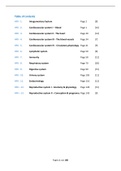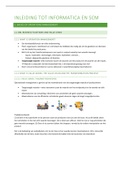Summary
Summary McTimoney College of Chiropractic - Human Function II
- Institution
- University Of Ulster
Complete summary of Human Function I of all anatomy & physiology (A&P) slide decks. I also included an overview of potential exam questions provided by the lecturer with my own answers to all questions (taken from my summary). This is everything you need to know for the exam, you are guaranteed for...
[Show more]




